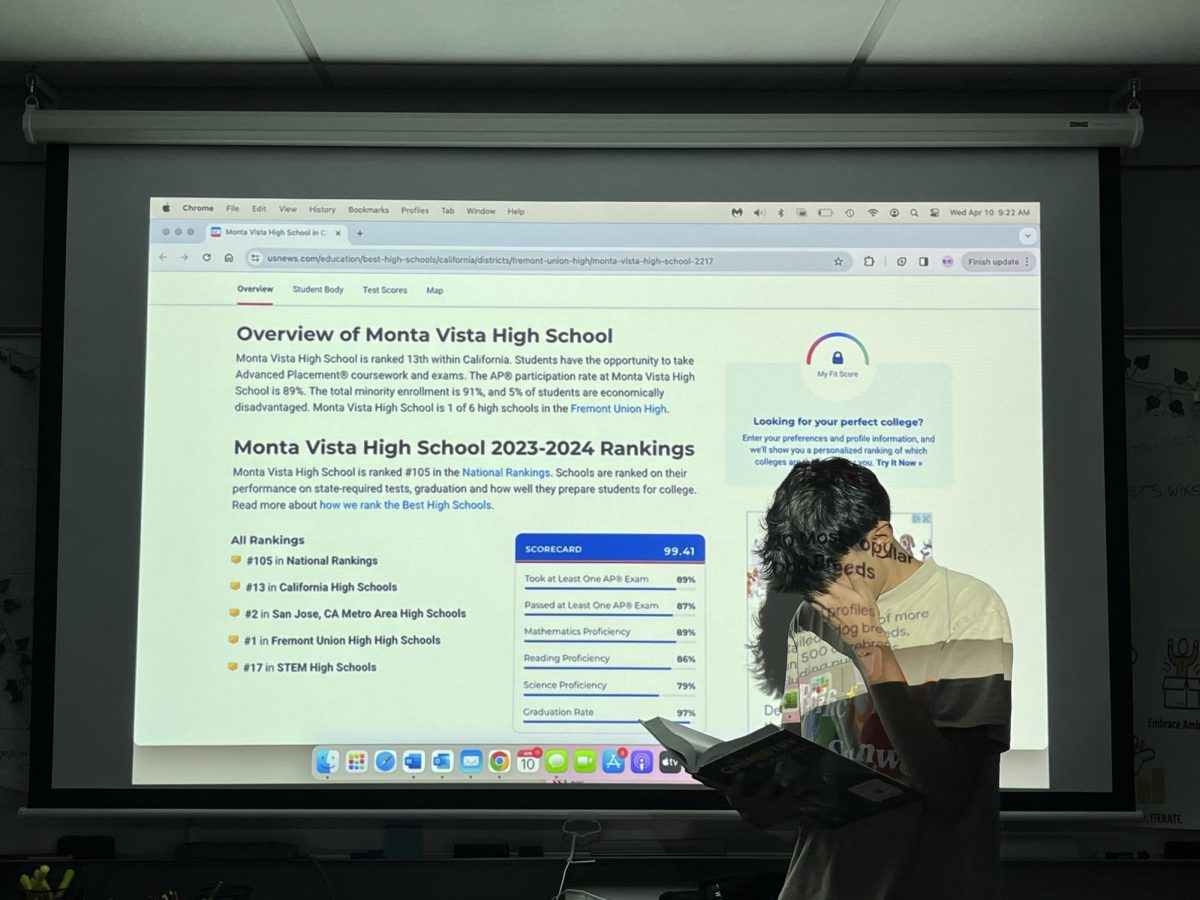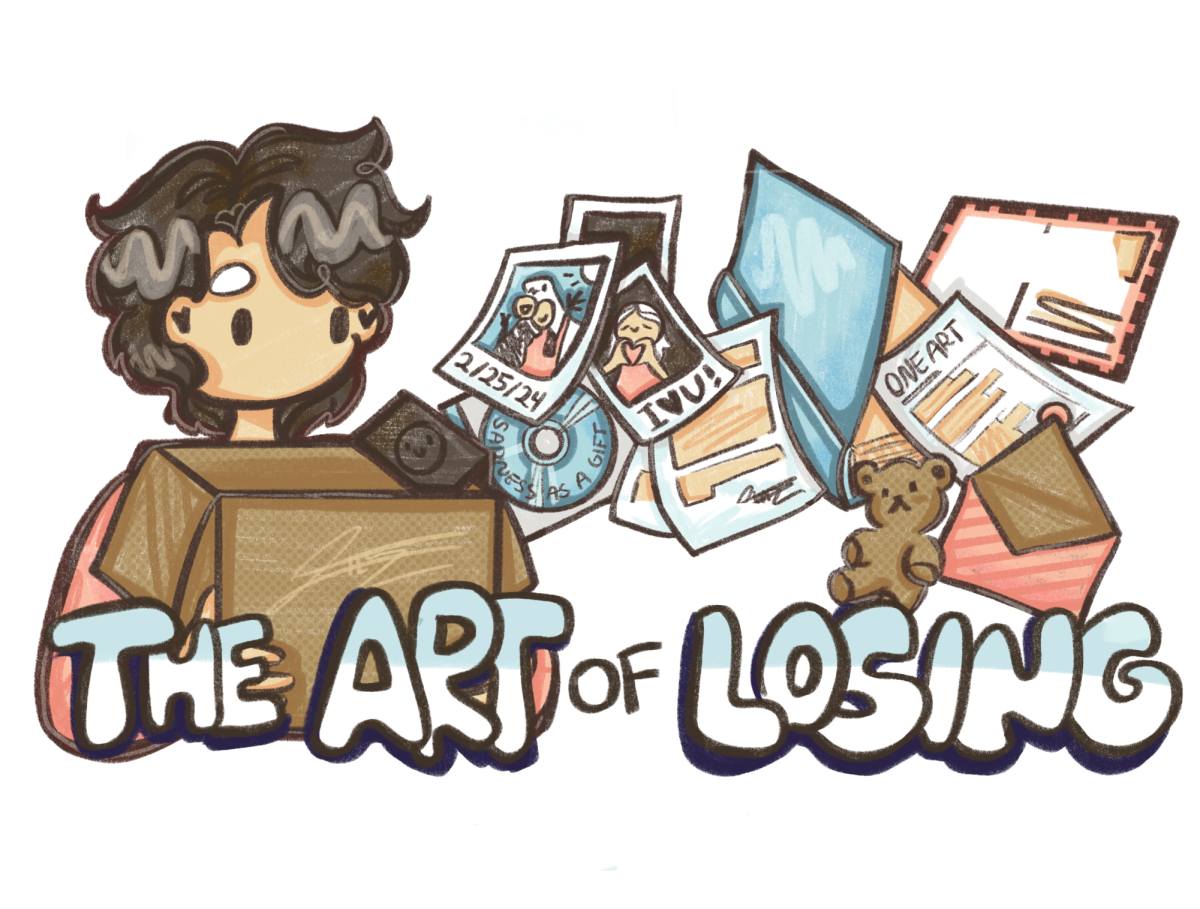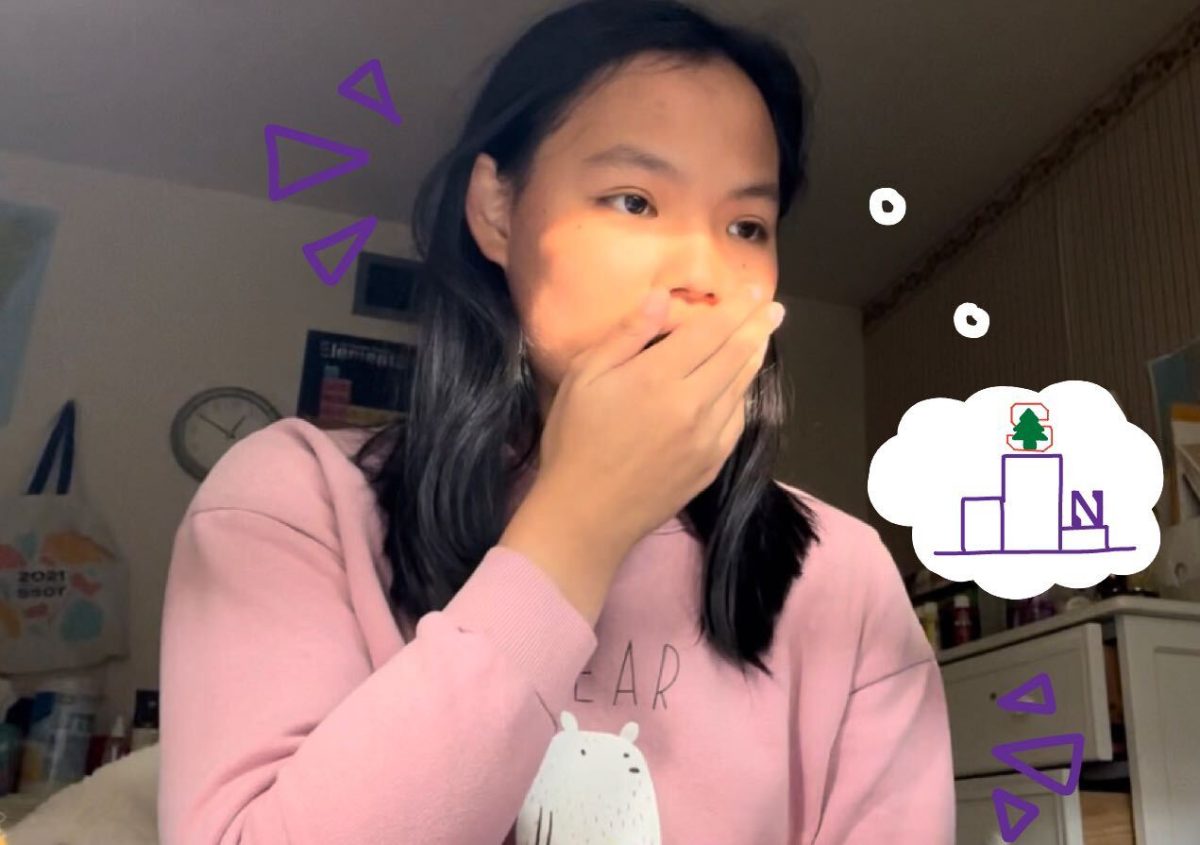
Yet, in the new country anchored far across the Pacific, most everyone she saw was Asian. Like back home.
“I never thought about being around Asians in America,” Hsu said. “I think California is different.”
From a racial standpoint, MVHS is a definite outlier on the national spectrum. While people of Asian ethnicity make up roughly five percent of America, they hold a groundbreaking 82 percent in the MVHS student population. The flopping minority-majority demographic is old news to long-term residents, yet newcomers often need adjusting to the unexpected — for Hsu, fairly familiar — landscape.
This ocean of shared heritage may seem like MVHS cushions any Asian into the school environment. Studies have shown that people of the same racial background naturally flock together due to the overlapping cultural experiences. Parts of MVHS reflect the phenomenon, as clumps of friend groups of the same ethnicity are scattered across the campus. One even made an unofficial name for themselves in the Class of 2015 called “Hong Kong corner,” mainly composed of students of Asian ethnicity.
But for international students, MVHS maps out differently. Many of them are from Asia, like the rest of MVHS, but it doesn’t make it any easier for them to blend into the crowd. Hsu describes the feeling as being segregated. A fellow international student, junior Kitty Ma, echoes the sentiments.
“I thought everyone was nice,” Ma said. “But it turns out everyone has xenophobia. Freshman year kind of sucked for me.”
For Ma, freshman year was riddled with loneliness and alienation. At that time, she had just arrived in America. Every classmate knew, yet no one sparked up a conversation unless a pencil rolled down her side of the table or a pair of scissors lied next to her hands. Only then would they have to talk to Ma, asking her: “Can you pick that up?” or “Can you pass me that?” Otherwise they returned to their designated cliques. She barely spoke in her math class. She had no partners in P.E. She was truly alone.
Integration into a new country, let alone a new school, harbors fear in most students, especially when the transfer happens into secondary education. But instead of easing the transition, the MVHS community often worsens the phenomenon by shutting off inclusivity especially for immigrant students directly from Asia.
For one, it’s common to hear negative stereotypes against Asians, like the word ‘FOB’ — “Fresh Off the Boat” — thrown around the campus as a derogatory term. Many Asian American students nonchalantly call each other a “FOB” for a much too colorful outfit or a platinum blonde hair. You’re a “FOB” for bringing chopsticks and dumplings for lunch. You’re a “FOB” for humming K-pop songs in public. You’re a “FOB” for displaying your own culture in America.
These types of spiteful sentiments against Asians evoke a growing estrangement of Asian American students from their own Asian roots. This in turn results in an automatic alienation of international students like Hsu and Ma, who carry the most direct representation of their culture back home, churning up a cold negative atmosphere against international students in MVHS.
For better or for worse, rarely do we see an open disgust against international students in MVHS. But subliminal messages are enough to fester in the minds of newcomers that they’re not welcome in the school. It’s the strange look you leave when they say they just moved to America three months ago. It’s the silent treatment you give the entire school year despite being in the same class. It’s the English you choose to speak with them, despite your fluency in your native language.
“I feel like [for] some Asian students, while they speak fluent English, they also speak fluent Chinese,” Hsu said. “And they usually don’t speak Chinese to me. It makes me feel segregated, differentiated from them.”
Granted, there are those who go out of their way to help assimilate international students into MVHS. There are clubs like New Student Support that has been fostering such welcoming atmosphere for years, attracting many students who may feel uncomfortable joining other clubs mainly for native English speakers.
But segregation, xenophobia — those words should never be the descriptors of our school, yet they stay the closest to Hsu and Ma’s hearts. Their feelings alone are enough to validate our lack of attention towards international students. And MVHS as a community must make a deliberate effort so that such feelings are not uniform across all international students.
When we take so much pride in our diversity as a school, it becomes our responsibility to pull those minorities into our community. When such conscious endeavors toward inclusivity go absent, we are further poking at the scars we have left in those like Hsu, Ma and many others alike.




















